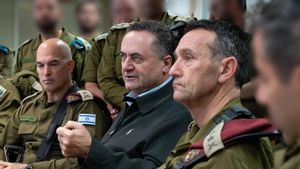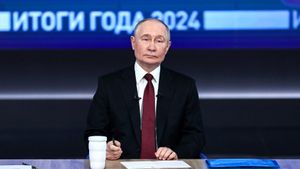YOGYAKARTA - The structure of historical story text is the basic framework that became the foundation of a past event, in order to become an easy-to-understand narrative. This structure is also used by historians to compile a historical event.
Understanding this structure is important to be able to analyze, compose, or enjoy a historical work. Let's discuss more about the main components that build a historical story text.
To understand the text of historical stories, quoted from the website of the Faculty of Letters, Sanata University, Dharma, the following points must be considered:
In writing history, researchers are required to rebuild the relationship between facts. Both topographic and temporal (chronological) spatial relations must be well established.
Thus, historians seek to connect the points of past events to form a complete picture
Historical writing demands high accuracy. Historians are required to present facts supported by authentic evidence such as documents, artifacts, or testimonies.
Unlike historical novel writers who are not bound to proof. They can compose stories based on imagination, without having to seek validation from historical sources.
The main purpose of historical text is to document and explain past events objectively. Therefore, every element in the text of history must be academically accountable.
Historical novels, on the other hand, have a wider goal, namely entertaining and providing alternative interpretations of historical events.
In addition, authors of free history experiment with various possibilities, including changing historical details to achieve dramatic effects.
Before continuing, also read the article discussing the History of the Batavia Tower, Modern Architecture Icon in Tanah Abang
Kosasih (2019) identified three main components in the text structure of historical stories. The three components are introduction, event recording, and closing, here is the explanation:
The initial part of this text serves as a story background. Here, the reader is introduced to events to be told, including the time and place of the incident.
In addition, the main figures involved in the incident are also often introduced in general in this section.
The essence of the historical story text lies in this section. The recording of events presents a series of events in chronological order, following the time of events.
This sequential event presentation allows readers to understand the storyline clearly. In some cases, the author can use an anachronic technique to create dramatic effects or highlight certain aspects of the story.
The final section of this text serves as a solution or conclusion of the entire series of events. The closure often presents the consequences or impacts of events that have occurred, such as victory, defeat, or social change.
In addition, the author can also add personal comments or evaluations of the incident.
Thus, when compiling event recordings, writers or historians can choose to present events in chronological terms or using an anachronic techniques.
Then if the event is presented in chronological terms, the reader will follow the storylinear. However, if the author uses an anachronic technique, events can be presented beyond the actual time sequence to create certain effects.
In addition, historical texts are only compiled by only describing events in sequence without providing an explanation of the causal relationship between these events called chronic events.
In addition to the text structure of historical stories, follow other interesting articles too. Want to know other interesting information? Don't miss it, keep an eye on the updated news from VOI and follow all of its social media accounts!
The English, Chinese, Japanese, Arabic, and French versions are automatically generated by the AI. So there may still be inaccuracies in translating, please always see Indonesian as our main language. (system supported by DigitalSiber.id)












